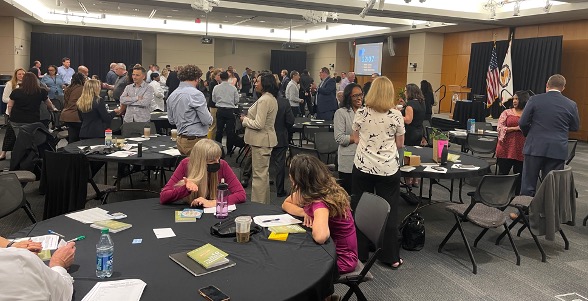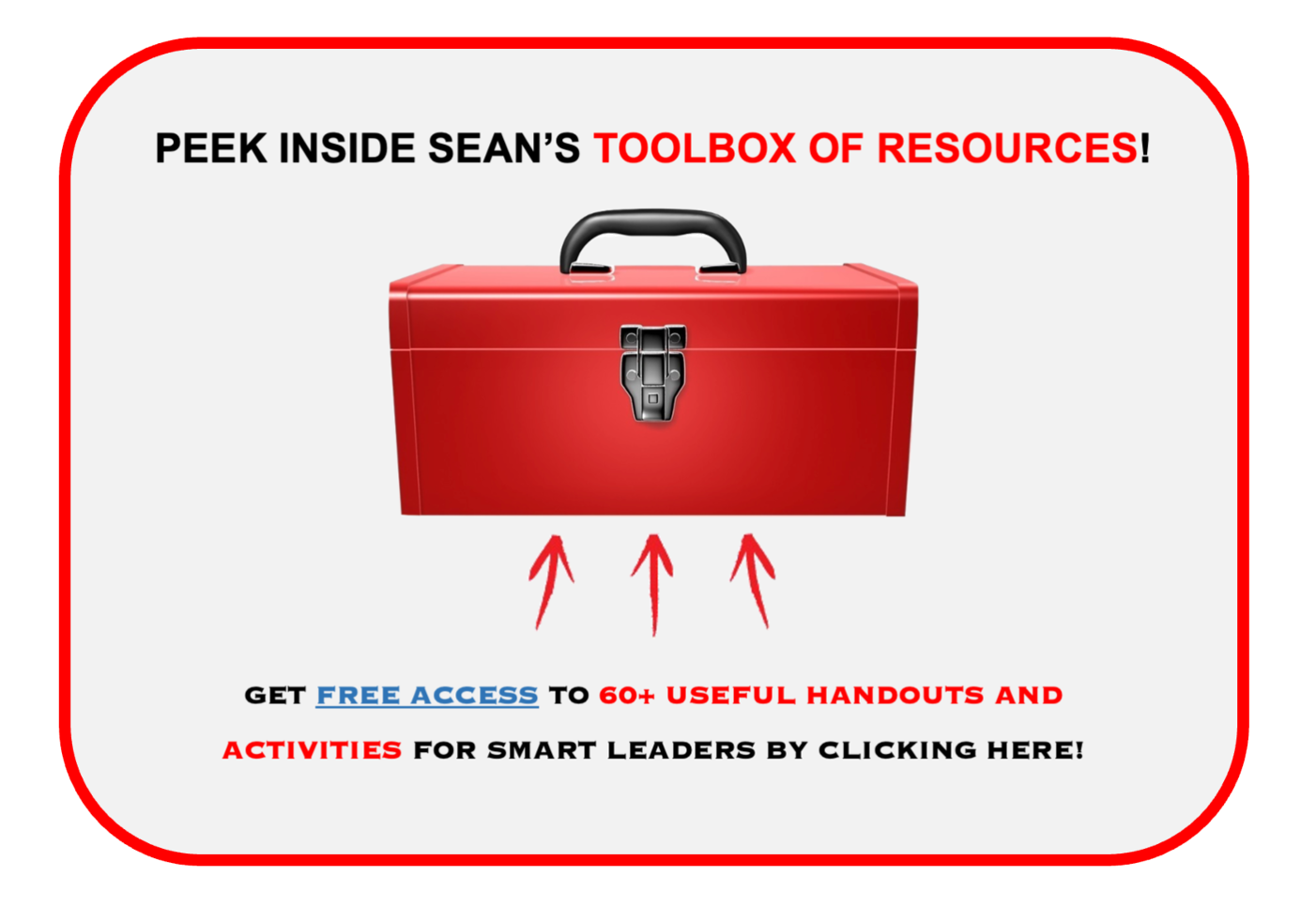Understanding and working effectively with all four generations in the workplace is more crucial than ever for leaders who strive to foster a successful and cohesive team culture.
Baby Boomers, Generation X, Millennials, and Generation Z each bring distinct experiences, expectations, and strengths to the table.
The key to enhancing team performance and nurturing a healthy culture lies in recognizing these generational nuances and leveraging them to create a workplace where everyone feels valued and motivated. By doing so, leaders can bridge generational gaps, improve collaboration, and enhance productivity, regardless of whether their teams work in-person, remotely, or in hybrid environments.
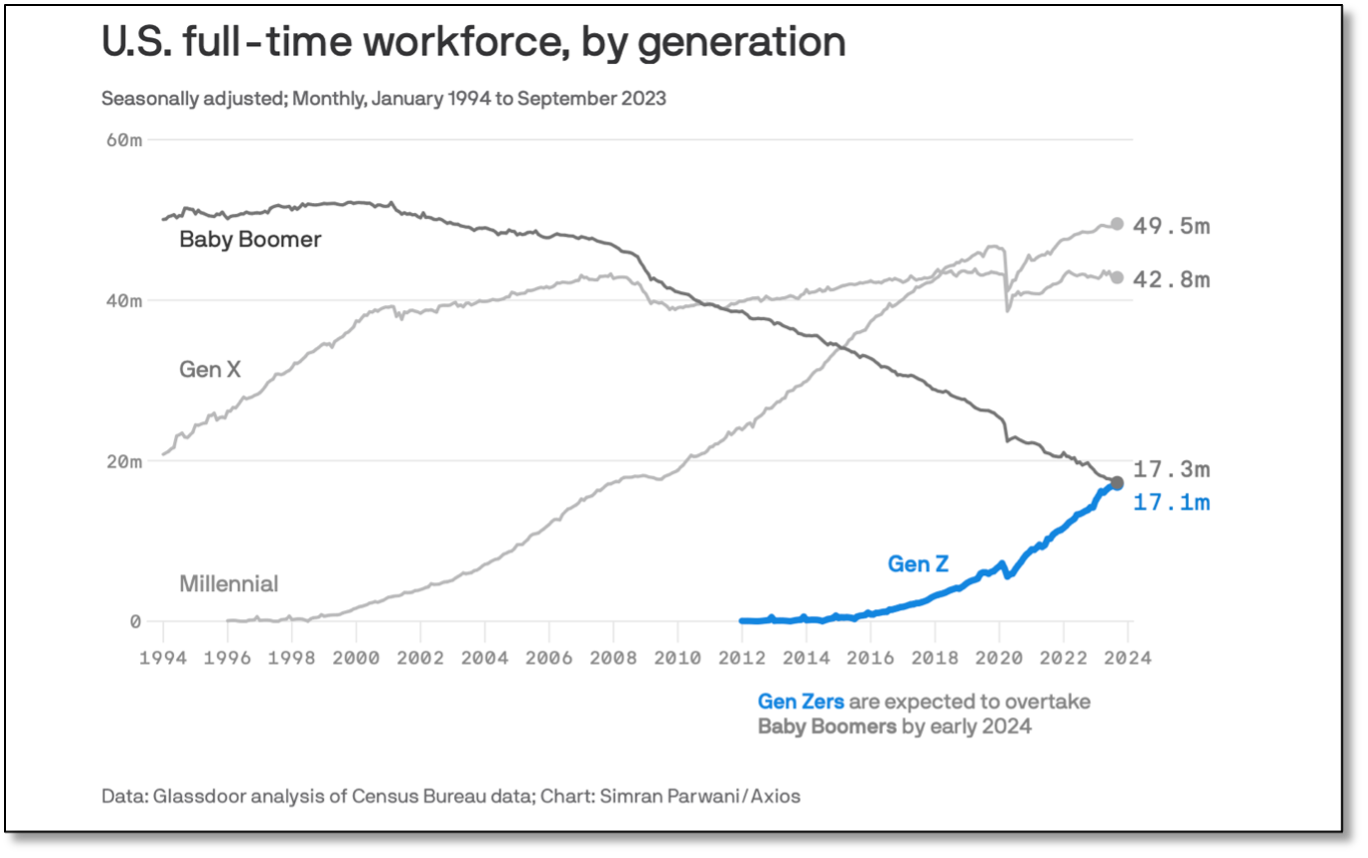
( The image above illustrates census data compiled by Glassdoor )
The modern workplace is unique in that it encompasses an unprecedented range of age groups. Millennials make up the most of the full-time workforce with nearly 50 million workers, followed by Gen X at just over 40 million, and both Baby Boomers and Gen Z at just over 17 million.
Leaders who understand the historical and social forces that shaped each generation can better connect with their team members and address their needs.
This fosters a culture of inclusivity, shared respect, and increased employee engagement…

Below are three key steps leaders can take to improve generational understanding and productivity:
1 – Develop an Understanding of Each Generation on Your Team
Understanding each generation and their tendencies, including their preferred way of communicating and their comfort with technology is helpful…
Leaders should be aware of these differences and adapt their approach accordingly…
- Baby Boomers (Born 1946-1964): This generation grew up in an era where face-to-face interaction was the norm, and many still prefer in-person meetings or phone calls. While they have adapted to using email and digital platforms, they value personalized and direct communication. Leaders can support Baby Boomers by offering platforms for real-time dialogue and recognizing their preference for acknowledgment.
- Generation X (Born 1965-1980): Known for being self-reliant and independent, Gen Xers appreciate clear, concise communication. They came of age during the early technological revolution, making them adept at using email and other digital tools. However, they value work-life balance and may prefer asynchronous communication methods that allow for flexibility. Leaders should encourage transparent communication while respecting their time and independence.
- Millennials (Born 1981-1996): As digital natives, Millennials are highly comfortable with fast-paced and collaborative communication styles, including instant messaging and social media platforms. They appreciate frequent feedback and the opportunity to engage in two-way conversations. Leaders should create a feedback-rich environment that supports collaboration and validates their contributions.
- Generation Z (Born 1997 and after): The youngest generation in the workforce, Gen Z, has grown up with smartphones and social media as integral parts of their lives. They prefer highly visual and digital-first communication, often through platforms like Slack, Teams, or other collaborative apps. Leaders should leverage these tools to maintain a constant and engaging line of communication that aligns with Gen Z’s expectations.
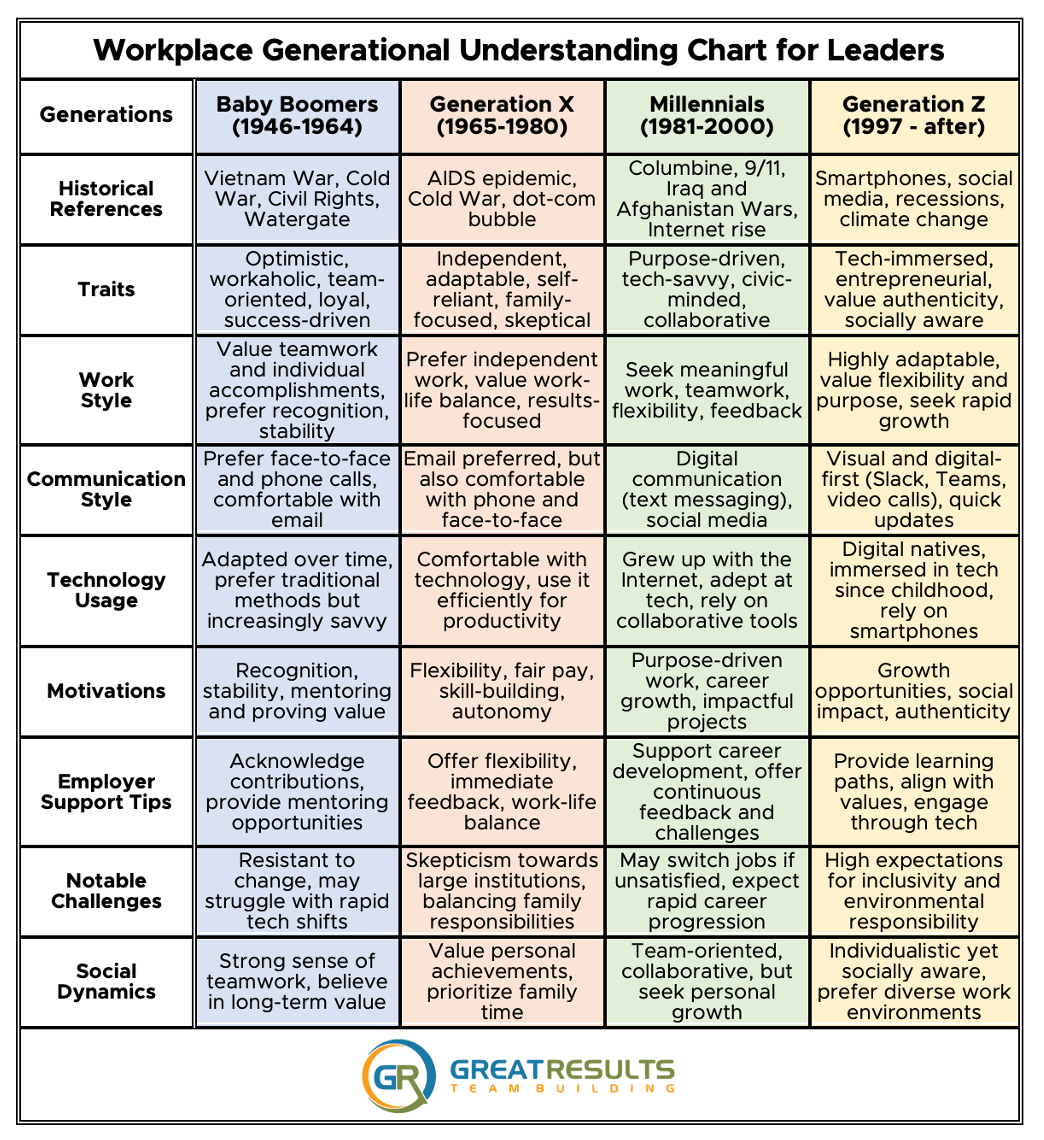
2 – Create Opportunities for Cross-Generational Mentorship
One of the most effective ways to build a cohesive team is by fostering mentorship and knowledge sharing between different generations. This not only helps bridge the knowledge gap but also builds mutual respect and understanding.
- Ask Baby Boomers to be Mentors: With their extensive experience and strong work ethic, Baby Boomers are well-suited to mentor younger generations. Leaders can create formal and informal mentorship programs where Boomers can share their expertise while learning new perspectives from younger team members. Such initiatives reinforce Baby Boomers’ sense of value and purpose, motivating them to continue contributing.
- Implement Reverse Mentoring: In addition to traditional mentorship, leaders should consider reverse mentoring, where younger employees mentor older ones, particularly on technology and modern workplace trends. Generation Z and Millennials, for example, can help Baby Boomers and Gen Xers stay current with digital tools, fostering a spirit of collaboration and continuous learning.
- Encourage Collaborative Projects: Assigning projects that require input from multiple generations ensures diverse viewpoints are considered and respected. This approach enhances problem-solving and boosts creativity, allowing the team to harness the strengths of each generation
3 – Embrace Flexibility and Adaptable Work Policies
Flexibility in work policies is essential for accommodating the diverse needs and expectations of a multigenerational workforce. Leaders who create adaptable environments empower their teams to work in ways that best suit their productivity and personal circumstances.
- Work Arrangements: While Baby Boomers and Gen Xers may value the structure of traditional work hours, Millennials and Gen Z often prioritize flexibility, such as remote work or hybrid schedules. Leaders should aim to offer varied options that align with employees’ preferences, helping them achieve a better work-life balance.
- Technology and Tools: Adopting technologies that facilitate flexible work, such as collaborative platforms and video conferencing tools, supports seamless communication and workflow. This approach benefits all generations by creating an inclusive and dynamic work environment.
- Recognition and Rewards: Leaders can tailor recognition programs to resonate with generational values. For instance, Baby Boomers may appreciate public recognition of their long-term achievements, while Millennials and Gen Z may prefer personalized, real-time feedback for their efforts.

Understanding Generational Differences Drives Collaboration
Understanding and working with a multigenerational workforce is an essential component of fostering a thriving and collaborative team culture. Each generation, from Baby Boomers to Generation Z, contributes unique strengths, perspectives, and work styles that, when acknowledged and harnessed, can propel a team toward greater productivity and innovation.
To create an environment where all generations feel valued, leaders should invest in tailored strategies that respect and incorporate these differences.
Customizing your workplace to fit each generation’s preferences can significantly enhance team cohesion.
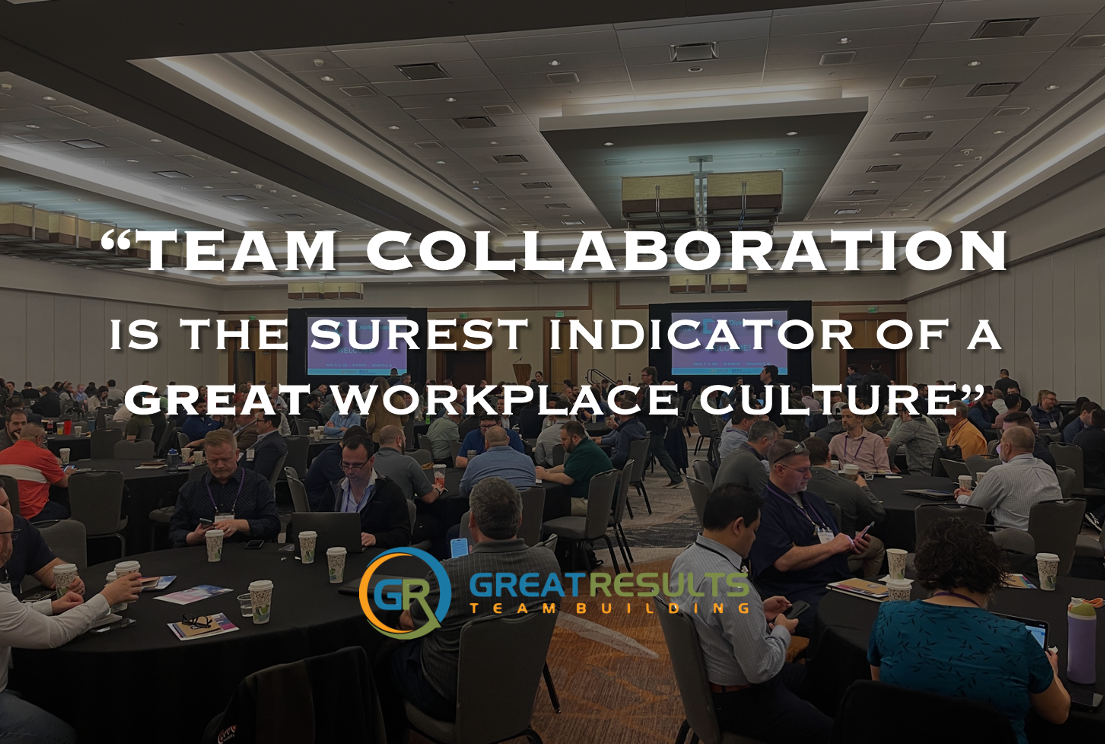
For older generations who thrive on structure and familiarity, reserving permanent desks or dedicated workstations can provide a sense of stability and security.
On the other hand, younger generations, who often prefer flexibility and variety, can benefit from options like desk hoteling or hot desking, fostering a more dynamic and adaptive environment.
By understanding what motivates each generation and avoiding stereotypes, leaders can replace the generational divide with a united, agile workforce. This approach can also lead to rediscovering successful practices and technologies previously used by older generations that may still offer valuable solutions for today’s challenges.
The result is a team that is productive, motivated, and adept at problem-solving, ready to face new challenges with creativity and collaboration.
Team-Building Events Promote Generational Understanding
Hiring a team-building facilitator can be a game-changer for organizations looking to bridge generational gaps and create a positive, profitable workplace culture.
A skilled facilitator brings expertise in designing activities and discussions that highlight the strengths and tendencies of each generation. This encourages team members to see beyond age-based assumptions and appreciate the diverse perspectives and skills their colleagues bring to the table.
Team-building facilitators also create an environment where open communication and mutual respect are prioritized. By guiding interactive workshops and structured conversations, facilitators help employees understand and embrace differences, fostering a deeper level of inclusivity and collaboration. This can lead to improved morale, stronger interpersonal relationships, and enhanced team performance.
Understanding and effectively managing a multigenerational workforce requires empathy, adaptability, and strategic communication.
Leaders who prioritize these elements will cultivate a culture of mutual respect and collaboration that leverages the unique strengths of each generation.
By fostering open communication, promoting cross-generational mentorship, and embracing flexible work policies, leaders can bridge generational divides and build a more cohesive, innovative, and successful workplace where all generations feel valued and motivated to contribute their best.
– – – – –
Sean Glaze is a leadership speaker, teambuilding facilitator, and author who delivers engaging experiences that ignite your team’s performance. Sean has worked with clients like Cisco, John Deere, the CDC, and Emory University to increase collaboration, boost productivity, and build more positive and profitable workplace cultures.
that ignite your team’s performance. Sean has worked with clients like Cisco, John Deere, the CDC, and Emory University to increase collaboration, boost productivity, and build more positive and profitable workplace cultures.
As a successful basketball coach, Sean gained valuable insights on turning talent into teamwork – and now he travels around the country to share those lessons. Sean’s conference keynotes and custom team building events deliver laugh-out-loud moments and memorable take-aways that transform your people into winning teammates and more effective leaders.
Sean’s books, Rapid Teamwork, The 10 Commandments of Winning Teammates, and Staying Coachable are entertaining parables that help accelerate the growth of leaders and their teams!


